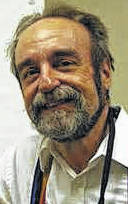
The holiday season is upon us. Most folks are filled with the joy that rises out of mass consumption, but I am, as usual, feeling a few misgivings. I know that more than a few telescopes and binoculars will be sitting under trees on Dec. 25.
Many of those marvelous optical instruments will sit idle until March as their owners huddle with cold-weather dread inside their houses. Some others will be ill-prepared for the difficulty of finding anything other than a bright planet and, of course, the moon.
Telescope sales outlets may hear the jolly sound of Santa toting up the cash register receipts. All I can hear is the wailing and gnashing of teeth as folks learn to use their new telescopes.
You’ll never feel more like Santa than when you buy a child a telescope for Christmas. You’ll never feel more like the Grinch when you step outside on Christmas night with little Jamey or Jimmy and you hear the plaintive cry, “Find something for me, beloved parental unit.”
Well, parental units, the sky is full of astro-goodies you can see in a small telescope, but you need to forearm yourself with knowledge.
So do yourself a favor. Purchase a good set of star charts for yourself. And I don’t mean the one you have on your smartphone. Don’t get me wrong. Apps can be useful to help you find and learn the constellations, which is a necessary part of learning the sky.
Your smartphone may also help you to find bright planets like Venus and Saturn. However, it will be almost worthless when you’re trying to find the glorious sights that astronerds refer to as “deep sky” objects: star clusters, gaseous nebulae, and distant galaxies.
Another alternative is to buy a computer-controlled telescope and let the telescope do the finding for you. I hate to sound like a parsimonious old fuddy-duddy, but I’d recommend against it.
If all you want is a quick look at the universe, you can do it on the Internet or go to one of the programs sponsored by Perkins Observatory, the Columbus Astronomical Society, or (if you don’t mind driving a couple of hours), the John Glenn Astronomical Park in the Hocking Hills.
Computer-controlled telescopes are expensive and sometimes difficult to use. More importantly, they circumvent the true joy of amateur stargazing — learning the sky and passing that ancient knowledge on to the next generation of stargazers. Jimmy and Jamey will thank you for it.
So, buy your telescope before Christmas, take it outside, and learn to find a few objects.
If that means that you have to wait until next Christmas, so be it. You can spend a fruitful year hanging out with the astronerds and intelligently deciding what telescope is best for your needs.
Of course, there are alternatives to buying a telescope, at least for this Christmas. If you are truly a newbie, waiting a year has distinct advantages. You can spend a pleasant year learning the sky. Start by taking your smartphone out and learning the seasonal constellations as they rise and set. They will act as a roadmap for you as you begin to learn the locations of the most spectacular astronomical objects.
Now grab whatever binoculars you have around the house and start observing the brighter objects that are visible in binoculars. Once you learn to find them in your binos, finding them with a telescope will be a snap.
You can see some objects, like Jupiter’s four brightest moons, easily in binoculars. A few objects look best in binoculars, believe it or not. For example, the Pleiades, or Seven Sisters, in Taurus are visible to the unaided eye but are far too large a star grouping to fit into a telescope field. In binos, the little dipper-shaped collection of six or seven stars explodes into dozens of stars.
And how about a family membership to your local astronomy club, the Columbus Astronomical Society? They meet at Perkins Observatory on the second Saturday of the month. If you have bought a telescope, the members will fall over each other attempting to help you learn how to use it. If you haven’t, they will show you their telescopes, explain their ‘scopes capabilities, and you will end up making a more informed purchase for next Christmas.
Also, Perkins Observatory continues to hold its regular Friday night programs under its new director, Don Stevens. On clear nights, some members of the club set up their ‘scopes to let you get a look or twelve. Ask them, and they’ll get out their laser pointers and show you where their target objects are located. I learned the sky in exactly that way. I am happy to say that the helpful attitude of the members hasn’t changed in the 40 years that I have been a member.
Above all, don’t let the cold weather deter you. The universe is filled with wonderful things to see during the cold, dark days of January. Buy a pair of thermal underwear to throw into the box with your telescope purchase, noble gift givers. While you’re at it, clip this column and pin it to the thermals.
If you know how to find a few objects before Christmas, that first foray into the night will be a joy and not an exercise in frozen frustration. Jamey will think you’re an astronerd of the highest order, and you won’t spend most of January wondering why you blew all that money on the %#*& thing.
Next week, I’ll describe a few easy-to-find objects you can observe after Christmas in that new telescope or those old binoculars.


